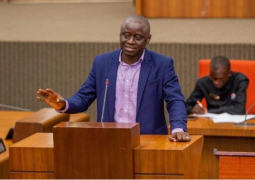
The preliminary fieldwork conducted in The Gambia and Ghana on the interrelationships among youth, gender and livelihoods.
They examine how policy in developing countries, typically characterised as related to child labour or education, needs to emphasise the linkage across processes that affect young people.
We argue that policy will be improved if young people are given voice to express how work, education, social networks, and culturally-bound notions of responsibility are linked and how they perceive the opportunities and constraints on their ‘life chances’.
The study conducted in Ghana and The Gambia in 2003 in which the main objectives were to examine how young low-income women and men in urban areas negotiate livelihoods, with particular reference to work and training.
The main findings, focusing in particular on the nature and extent of young people’s paid and unpaid work and its gender dimensions, the effects of youth work on employment in later life, the disparities between the perceived and actual role of education in occupational mobility, and the scope and efficacy of current policy interventions regarding youth and gender in Ghana and The Gambia.
The pilot study, their conceptual and policy significance, and the ways in which future research might better illuminate the relationships between poverty, gender inequality and disadvantage among young people.
Beijing Global Platform for Action being ‘women and poverty’, ‘education and training for women’, and the ‘girl-child’ (DFID, 2000; UNDAW, 2000).
These target areas are especially important given the mounting economic responsibilities of women as daughters, as heads of their own households, or, in the context of growing male unemployment, as
primary breadwinners and the issue of youth has traditionally been less prominent in the development literature, in the last decade or so young people have become a more frequent subject of academic enquiry.
This interest, in turn, is both a contributory cause, and effect, of the increasing attention given to youth and youth rights in major policy debates which gained momentum following the International Year of the Child in 1979 and the formulation of the Convention on the Rights of the Child.
This said, it remains unclear whether the profile of youth (and
children) on the international policy agenda remains as high today as in the early 1990s and whether debates have lost some of their critical edge.
The past decade has seen considerable institutional reforms, the broadening of youth-led policy agendas to embrace previously neglected groups such as the girl-child, and imaginative iniatives to grant a political voice to young people and to improve their social conditions (Annan, 2001).
Yet recent figures suggest that approximately 700 million young people depend upon less than one dollar per day (an increase of approximately 12 million per annum since 1987), that at least 670 670 million young people suffer from two basic deprivations, and that gender gaps in education and millions young people suffer from two basic deprivations, and that gender gaps in education and health remain significant.





